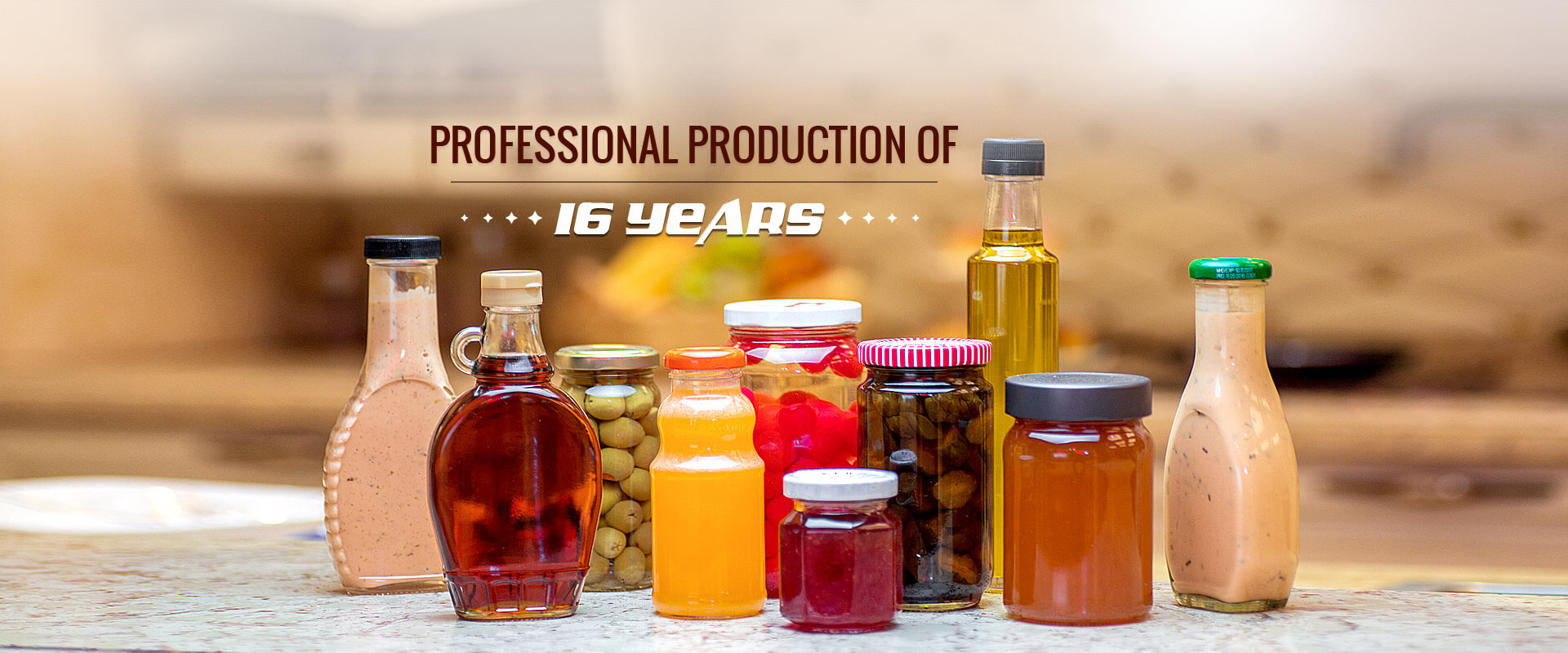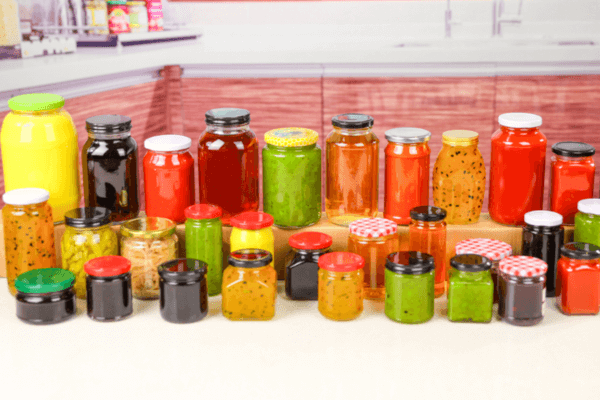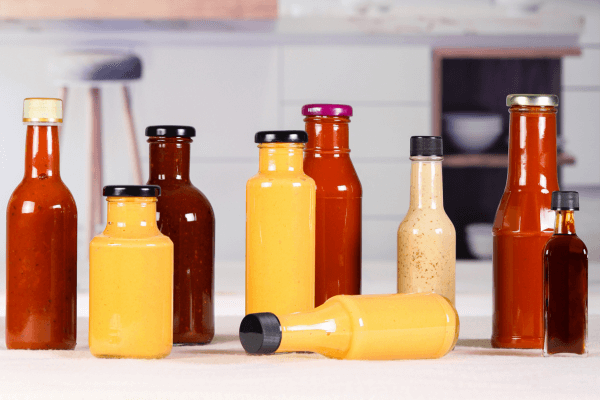
In the face of growing environmental crises, public health challenges, and economic turmoil, one aspect of our future is clear: glass packaging. With a history dating back more than 5,000 years, glass is one of the oldest and most trusted packaging materials, still shaping human civilization, protecting the environment, and improving people's lives.
Most consumers equate glass with high quality, so most people will assume that the product inside is also high quality. Some brands that want to convey a vintage or 'old-fashioned' feel may choose glass packaging. Many consumers no longer see eco-friendly packaging as an option - it is presently an expectation. Fortunately, glass is considered a very recyclable packaging. It allows for product transparency, which is an important factor in stimulating purchase intent in a retail environment. It is also strong enough as a rigid structure. In this article, we will discuss the information on food glass packaging. Let's get started!
Packaging is more than just packaging - it's the first thing a shopper sees. It carries the burden of protecting your food, telling your brand story, and catching the shopper's eye.
Packaging is an important communication tool, especially in a highly regulated and competitive market like Australia. According to FSANZ and the Australia New Zealand Food Standards Code, packaging must contain key information: ingredients, nutritional content, allergen warnings, and best-before dates.
Customized food glass packaging can also help your product stand out from the competition. Packaging that attracts consumer attention by using unique colors, designs, and other elements.
The first thing your customers see is the packaging. A well-designed package can grab their attention, pique their interest, and encourage them to learn more about your product.
Many food companies face the challenge of differentiating and finding their niche. Packaging differentiation is often a key success factor. Customized glass food packaging is a branding opportunity to make your food products unique and recognizable.
Glass is a safe material, not only because it does not react with the environment or its contents, but also because it does not contain any harmful chemicals that could be released into the food, for example when heated. Because of this, glass packaging ensures that food is not contaminated with harmful chemicals. What's more, the structure of the glass makes it easier to keep the bottle or jar clean. This very smooth material does not create an environment conducive to bacterial growth.
Glass packaging for food has many advantages from both the food producer's and the consumer's point of view. Because glass can be molded, glass packages can be any shape - from classic preserving jars to minimalist jars with simple shapes, to jars with more complex lines. They also have the advantage of being resistant to very low and very high temperatures. Glass containers can be microwaved and dishwasher safe. They are suitable not only for refrigeration but also for freezing.
On the environmental front, glass can be recycled over and over again and is also the material of choice for reuse. Recycling is important both to avoid depletion of natural resources and to reduce waste. Like metal, glass is an infinitely recyclable material and the recycling process is well controlled. Consumers are accustomed to sorting glass and taking it to the appropriate collection point.
In the confront of developing concerns around bundling contamination and natural affect, glass offers an economical arrangement. Glass is infinitely recyclable, meaning it can be recycled indefinitely without losing its quality. In addition, the recycling process for glass requires less energy than producing new glass, further reducing the carbon footprint.
Choosing glass over other materials makes a difference decrease squander and minimize the utilization of common resources. By choosing glass packaging, your brand will position itself closer to being environmentally supportive, thereby attracting more customers in the growing eco-friendly market.
Type I glass, known as borosilicate glass or heat-resistant glass, is highly resistant to heat and chemicals. The glass type is most commonly utilized for packaging laboratory chemicals. Type I glass is durable and suitable for all types of applications.
Type II glass, also known as treated soda lime glass, is Type III glass that has been treated for use with acidic chemicals. The treatment of the glass helps packaged products to be chemical, water, friction, breakage, and UV resistant. type II glass is suitable for uses other than acidic applications.
Type III glass or soda lime glass is less resistant to chemicals and water. Therefore, it is suitable for most food and beverage and pharmaceutical packaging.
The selection of suitable food packaging materials requires consideration of a variety of factors such as the characteristics of the food product (composition, pH, water activity, shelf life), processing and storage conditions (temperature, pressure, humidity), distribution and marketing channels (transportation, handling, mode of presentation), consumer preferences and expectations (convenience, appearance, safety), and legal and environmental regulations (labeling, recycling, disposal requirements). All of these factors must be taken into account when selecting appropriate packaging materials.
At HUIHE Glass Packaging, our expertise is not just in making packaging that protects your food, but in creating designs that attract and engage buyers. We understand the power of packaging in reflecting your company ethos building a strong brand identity, fostering loyalty, and encouraging repeat purchases.


Evaluate the supplier's product portfolio to ensure it offers the specific bottle types, sizes, and finishes required. Verify supplier's quality control measures and certifications to ensure consistent quality and compliance with industry standards.
Evaluate the supplier's production capacity and delivery schedule to ensure they can meet your expected demand. Consider the supplier's flexibility in adapting to changes in order volumes and delivery schedules.
Negotiate competitive pricing and payment terms based on your budget and financial strategy. Consider the vendor's pricing structure, including minimum order quantities and potential discounts.
Evaluate your supplier's logistics capabilities, including their transportation network, warehousing facilities, and delivery options. Make sure they can deliver bottles to your desired location efficiently and reliably.
Evaluate the vendor's customer service responsiveness and technical support capabilities. Look for a vendor that is proactive in resolving your issues and providing solutions promptly.
Ask suppliers about their commitment to sustainable practices, such as using recycled glass and reducing energy consumption. This is increasingly important for businesses seeking to align their packaging choices with environmental values.
Looking for glass food packaging? Contact us now and our team of packaging professionals will work closely with you to ensure that the packaging not only meets but exceeds your expectations in terms of aesthetics and functionality.